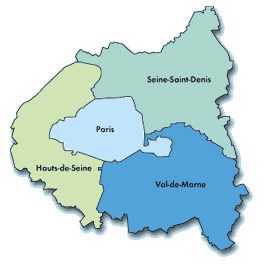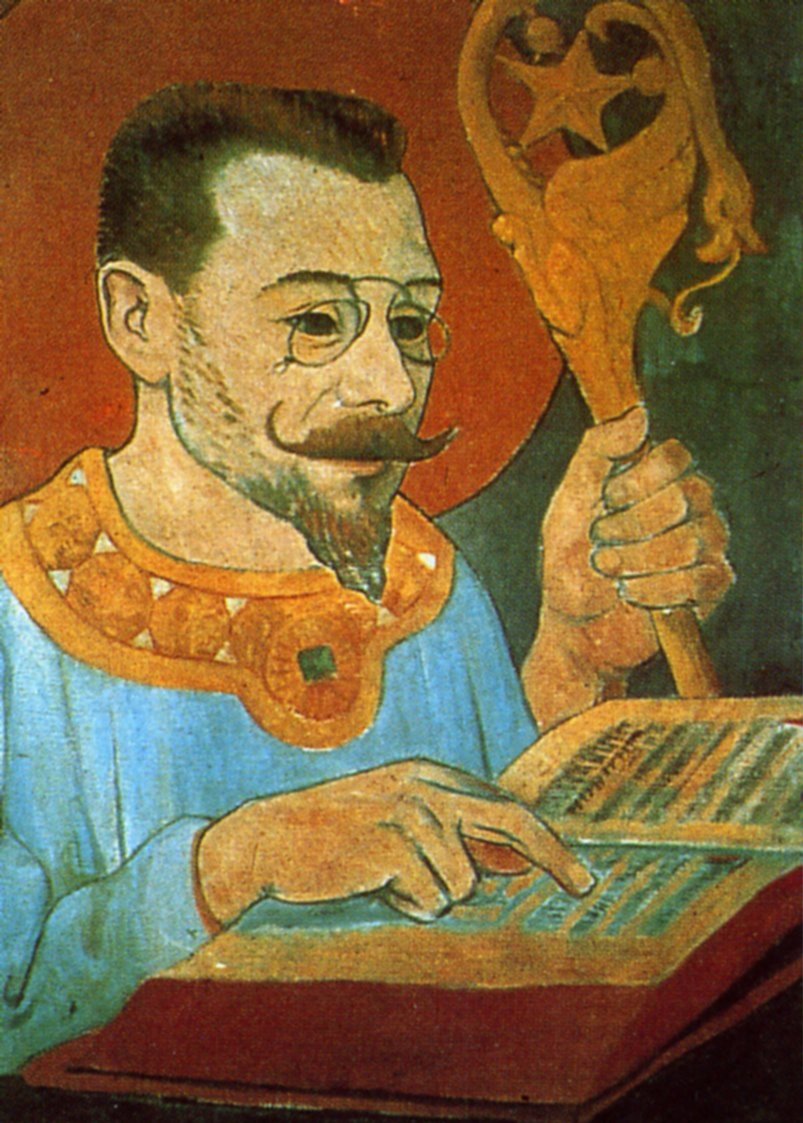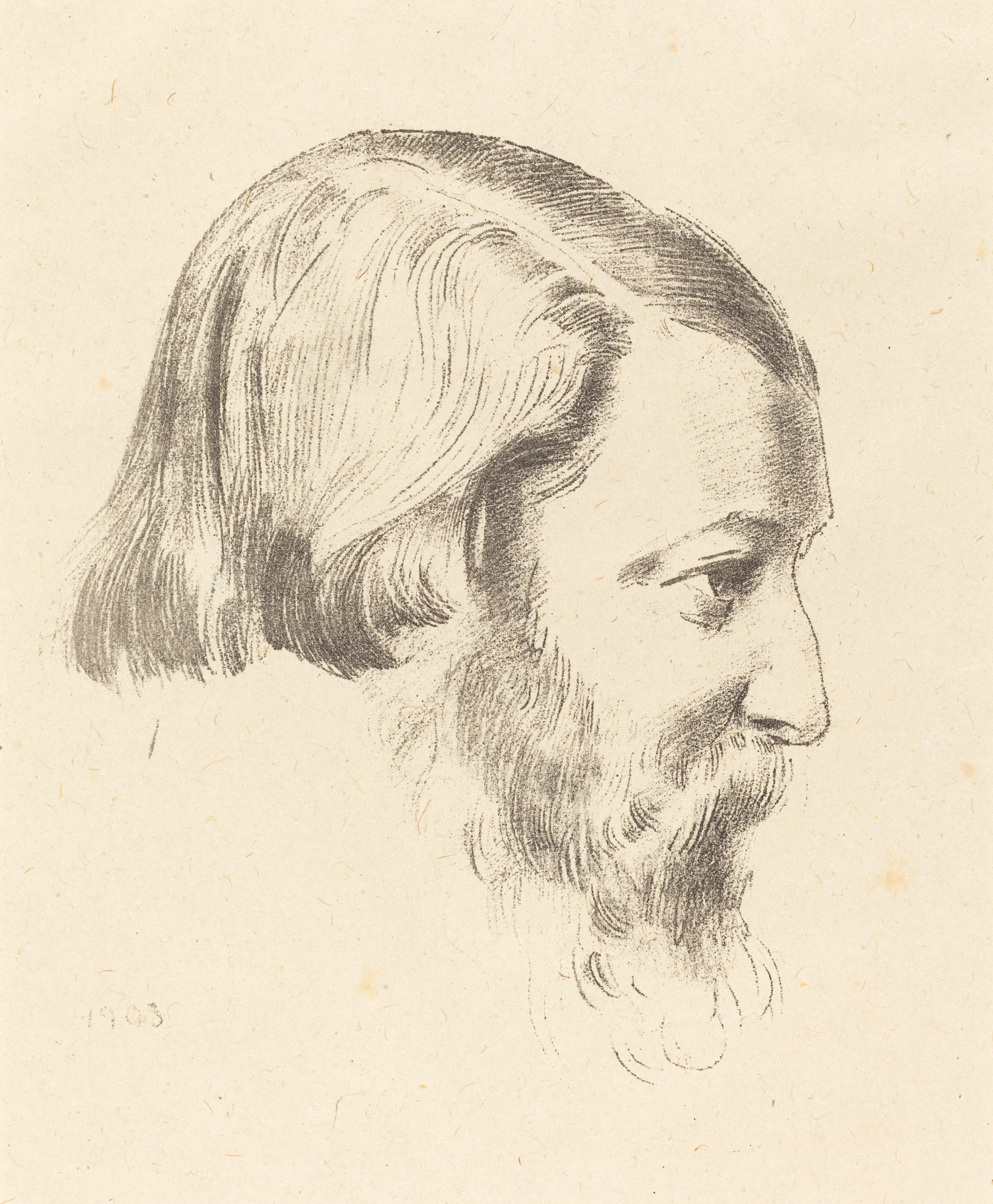|
Pierre Bonnard
Pierre Bonnard (; 3 October 186723 January 1947) was a French painter, illustrator and printmaker, known especially for the stylized decorative qualities of his paintings and his bold use of color. A founding member of the Post-Impressionist group of avant-garde painters Les Nabis, his early work was strongly influenced by the work of Paul Gauguin, as well as the prints of Hokusai and other Japanese artists. Bonnard was a leading figure in the transition from Impressionism to Modernism. He painted landscapes, urban scenes, portraits and intimate domestic scenes, where the backgrounds, colors and painting style usually took precedence over the subject. Early life and education Pierre Bonnard was born in Fontenay-aux-Roses, Hauts-de-Seine on 3 October 1867. His mother, Élisabeth Mertzdorff, was from Alsace. His father, Eugène Bonnard, was from the Dauphiné, and was a senior official in the French Ministry of War. He had a brother, Charles, and a sister, Andrée, who in 1890 ... [...More Info...] [...Related Items...] OR: [Wikipedia] [Google] [Baidu] |
Musée D'Orsay
The Musée d'Orsay ( , , ) ( en, Orsay Museum) is a museum in Paris, France, on the Left Bank of the Seine. It is housed in the former Gare d'Orsay, a Beaux-Arts railway station built between 1898 and 1900. The museum holds mainly French art dating from 1848 to 1914, including paintings, sculptures, furniture, and photography. It houses the largest collection of Impressionist and post-Impressionist masterpieces in the world, by painters including Berthe Morisot, Claude Monet, Édouard Manet, Degas, Renoir, Cézanne, Seurat, Sisley, Gauguin, and van Gogh. Many of these works were held at the Galerie nationale du Jeu de Paume prior to the museum's opening in 1986. It is one of the largest art museums in Europe. In 2021 the museum had one million visitors, up 30 percent from attendance in 2020, but far behind earlier years due to the COVID-19 pandemic. Despite the drop, it ranked fifteenth in the list of most-visited art museums in 2020. History The museum bu ... [...More Info...] [...Related Items...] OR: [Wikipedia] [Google] [Baidu] |
Hauts-de-Seine
Hauts-de-Seine (; ) is a département in the Île-de-France region, Northern France. It covers Paris's western inner suburbs. It is bordered by Paris, Seine-Saint-Denis and Val-de-Marne to the east, Val-d'Oise to the north, Yvelines to the west and Essonne to the south. With a population of 1,624,357 (as of 2019)Populations légales 2019: 92 Hauts-de-Seine INSEE and a total area of 176 square kilometres (68 square miles), it is the second most highly densely populated department of France after Paris. It is the [...More Info...] [...Related Items...] OR: [Wikipedia] [Google] [Baidu] |
Ker Xavier Roussel
Ker-Xavier Roussel (10 December 1867 – 6 June 1944) was a French painter associated with Les Nabis. Biography Born François Xavier Roussel in Lorry-lès-Metz, Moselle in 1867, at age fifteen he studied at the Lycée Condorcet in Paris; alongside his friend Édouard Vuillard, he also studied at the studio of painter Diogène Maillart. In 1888, he enrolled in the École des Beaux-Arts, and soon began frequenting the Académie Julian where Maurice Denis and other students formed the group ''Les Nabis''. In 1899, Roussel, Vuillard, and his another close friend, Pierre Bonnard, travelled to Lake Como, Venice, and Milan. In that year he settled in L'Étang-la-Ville, Yvelines and the subject-matter of his paintings veered towards rural landscapes. He drew his subject matter from the area around L'Étang-la-Ville and Saint-Tropez, adapting the scenery to Greek mythological episodes depicting women, children, nymphs, centaurs and fauns. His wife Marie (Vuillard's sister), his daught ... [...More Info...] [...Related Items...] OR: [Wikipedia] [Google] [Baidu] |
Édouard Vuillard
Jean-Édouard Vuillard (; 11 November 186821 June 1940) was a French painter, decorative artist and printmaker. From 1891 through 1900, he was a prominent member of the Nabis, making paintings which assembled areas of pure color, and interior scenes, influenced by Japanese prints, where the subjects were blended into colors and patterns. He also was a decorative artist, painting theater sets, panels for interior decoration, and designing plates and stained glass. After 1900, when the Nabis broke up, he adopted a more realistic style, painting landscapes and interiors with lavish detail and vivid colors. In the 1920s and 1930s he painted portraits of prominent figures in French industry and the arts in their familiar settings. Vuillard was influenced by Paul Gauguin, among other post-impressionist painters. Early life Jean-Édouard Vuillard was born on 11 November 1868 in Cuiseaux (Saône-et-Loire), where he spent his youth. Vuillard's father was a retired captain of the nav ... [...More Info...] [...Related Items...] OR: [Wikipedia] [Google] [Baidu] |
École Des Beaux-Arts
École des Beaux-Arts (; ) refers to a number of influential art schools in France. The term is associated with the Beaux-Arts style in architecture and city planning that thrived in France and other countries during the late nineteenth century and the first quarter of the twentieth century. The most famous and oldest École des Beaux-Arts is the École nationale supérieure des Beaux-Arts in Paris, now located on the city's left bank across from the Louvre, at 14 rue Bonaparte (in the 6th arrondissement). The school has a history spanning more than 350 years, training many of the great artists in Europe. Beaux-Arts style was modeled on classical "antiquities", preserving these idealized forms and passing the style on to future generations. History The origins of the Paris school go back to 1648, when the Académie des Beaux-Arts was founded by Cardinal Mazarin to educate the most talented students in drawing, painting, sculpture, engraving, architecture and other medi ... [...More Info...] [...Related Items...] OR: [Wikipedia] [Google] [Baidu] |
Paul Ranson
Paul-Élie Ranson (29 March 1861 – 20 February 1909) was a French painter and writer associated with Les Nabis. Biography He was born in Limoges. His mother died in childbirth, so he was raised and educated by his grandparents and his father, , a politician who served two terms as Mayor of Limoges. He received his first drawing lessons from his grandfather, Jean-Jacques Maquart, and was enrolled at the École des Beaux-Arts Appliqués à l'Industrie in 1877. In 1884, he married his first cousin, Marie-France Rousseau, and studied for a time at the École Nationale Supérieure des Arts Décoratifs before transferring to the Académie Julian, where he studied with Tony Robert-Fleury from 1886 to 1891. In 1888, he became one of the five founding members of "Les Nabis", a group that played a large role in the transition from Impressionism to the various styles of Modern art. His fellow founders were Paul Sérusier, Henri-Gabriel Ibels, Pierre Bonnard, and Maurice Denis. In ... [...More Info...] [...Related Items...] OR: [Wikipedia] [Google] [Baidu] |
Maurice Denis
Maurice Denis (; 25 November 1870 – 13 November 1943) was a French painter, decorative artist, and writer. An important figure in the transitional period between impressionism and modern art, he is associated with ''Les Nabis'', symbolism, and later neo-classicism."Denis, Maurice." Belinda Thomson, Grove Art Online, Oxford Art Online, Oxford University Press. Retrieved 18 June 2014. His theories contributed to the foundations of cubism, fauvism, and abstract art. Following the First World War, he founded the Ateliers d'Art Sacré (Workshops of Sacred Art), decorated the interiors of churches, and worked for a revival of religious art. Biography Early life Maurice Denis was born 25 November 1870, in Granville, Manche, a coastal town in the Normandy region of France. His father was of modest peasant origins; after four years in the army, he went to work at the railroad station. His mother, the daughter of a miller, worked as a seamstress. After their marriage in 1865, they ... [...More Info...] [...Related Items...] OR: [Wikipedia] [Google] [Baidu] |
Paul Sérusier
Paul Sérusier (9 November 1864 – 7 October 1927) was a French painter who was a pioneer of abstract art and an inspiration for the avant-garde Nabis movement, Synthetism and Cloisonnism. Education Sérusier was born in Paris. He studied at the Académie Julian and was a monitor there in the mid-1880s. In the summer of 1888 he travelled to Pont-Aven and joined the small group of artists centered there around Paul Gauguin. While at the Pont-Aven artist's colony he painted a picture that became known as ''The Talisman'', under the close supervision of Gauguin. The picture was an extreme exercise in Cloisonnism that approximated to pure abstraction. He was a Post-Impressionist painter, a part of the group of painters called Les Nabis. Sérusier, along with Paul Gauguin, named the group. Pierre Bonnard, Édouard Vuillard and Maurice Denis became the best known of the group, but at the time they were somewhat peripheral to the core group. In 1892 Sérusier met and befrie ... [...More Info...] [...Related Items...] OR: [Wikipedia] [Google] [Baidu] |
Académie Julian
The Académie Julian () was a private art school for painting and sculpture founded in Paris, France, in 1867 by French painter and teacher Rodolphe Julian (1839–1907) that was active from 1868 through 1968. It remained famous for the number and quality of artists who attended during the great period of effervescence in the arts in the early twentieth century. After 1968, it integrated with . History Rodolphe Julian established the Académie Julian in 1868 at the Passage des Panoramas, as a private studio school for art students.Tate Gallery"Académie Julian."/ref> The Académie Julian not only prepared students for the exams at the prestigious École des Beaux-Arts, but offered independent alternative education and training in arts. "Founded at a time when art was about to undergo a long series of crucial mutations, the Academie Julian played host to painters and sculptors of every kind and persuasion and never tried to make them hew to any one particular line". In 188 ... [...More Info...] [...Related Items...] OR: [Wikipedia] [Google] [Baidu] |
La Côte-Saint-André
La Côte-Saint-André () is a commune in the Isère department in southeastern France. Populations Personalities *Hector Berlioz was born here. His birthplace is now a museum: Musée Hector-Berlioz. *Philippe du Contant de la Molette was born here. Archaeological finds File:Char-gaulois-d-apparat.jpg, Cult wagon, Urnfield culture/ Halstatt culture, c. 1300-800 BC. See also *Communes of the Isère department The following is a list of the 512 Communes of France, communes in the French Departments of France, department of Isère. The communes cooperate in the following Communes of France#Intercommunality, intercommunalities (as of 2020): References Communes of Isère Hector Berlioz[...More Info...] [...Related Items...] OR: [Wikipedia] [Google] [Baidu] |
Le Grand-Lemps
Le Grand-Lemps () is a commune in the Isère department in southeastern France. Geography The area of the municipality is 1290 hectares (about 5 square miles). It is located at the edge of the plain of Bièvre (Beaver) river, halfway between Voiron and Saint-André-la-Côte. The town is located on the axis between Rives, Isère and La Frette, Isère (RD73). The natural reserve of the pond Le Grand-Lemps is classified as ''européenne2 reserves''. : Fiche sur l'étang et la tourbière du Grand-Lemps-Chabons. It is a natural area of ecological interest, flora and fauna which is (ZNIEFF) Type I/Zone No. 3800 ... [...More Info...] [...Related Items...] OR: [Wikipedia] [Google] [Baidu] |






.jpg)